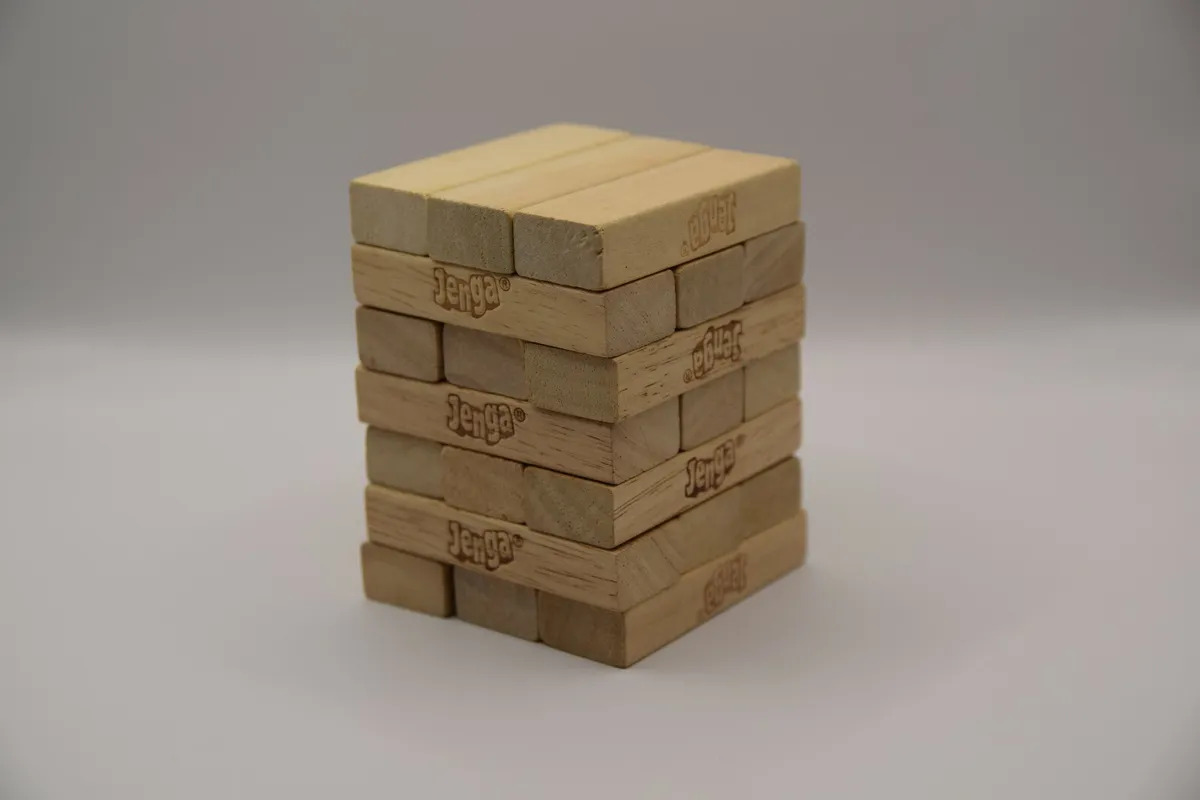Home>Gardening & Outdoor>Outdoor Recreation & Activities>Where Does Jenga Come From


Outdoor Recreation & Activities
Where Does Jenga Come From
Modified: October 19, 2024
Discover the origins of Jenga and its connection to outdoor recreation and activities. Uncover the history and cultural significance of this popular game.
(Many of the links in this article redirect to a specific reviewed product. Your purchase of these products through affiliate links helps to generate commission for Storables.com, at no extra cost. Learn more)
Introduction
Welcome to the intriguing world of Jenga, a game that has captured the hearts and minds of people across the globe. This classic block-stacking game has a fascinating history, and its origins are as captivating as the game itself. In this article, we will delve into the enthralling journey of Jenga, exploring its roots, evolution, and enduring popularity.
Jenga is more than just a game; it is a testament to the universal appeal of simple yet engaging activities. Whether you are a seasoned Jenga enthusiast or a newcomer eager to learn more about this beloved pastime, join us on a journey through time and space to uncover the captivating story behind Jenga.
Key Takeaways:
- Jenga originated from a simple wooden block-stacking game played in Africa, and its universal appeal has made it a beloved pastime for people of all ages and backgrounds.
- The game’s evolution and enduring popularity showcase the power of simplicity, creativity, and cross-cultural inspiration, bringing joy and camaraderie to countless players worldwide.
Read more: Where Does Glass Come From
History of Jenga
The history of Jenga is a tale of creativity, innovation, and sheer ingenuity. This beloved game traces its roots back to the early 1970s when Leslie Scott, a British board game designer and co-founder of Oxford Games Ltd., was inspired by a simple wooden block-stacking game she played with her family in Africa. This traditional game, played with handmade wooden blocks, sparked an idea that would eventually lead to the creation of Jenga.
Leslie Scott’s vision for the game was to introduce it to a wider audience, and in 1983, Jenga was officially launched. The name “Jenga” itself has an interesting origin, derived from the Swahili word meaning “to build.” This aptly reflects the essence of the game, which revolves around carefully constructing and deconstructing a tower of blocks with precision and skill.
Initially, Jenga gained popularity in the United Kingdom before making its way to the United States and other parts of the world. Its universal appeal transcended age, culture, and language, making it a beloved pastime for people of all backgrounds.
The game’s simplicity and the element of suspense and strategy it offers quickly captured the imagination of players, leading to its widespread acclaim. As Jenga continued to gain momentum, it solidified its status as a timeless classic, earning a permanent place in the realm of tabletop games.
Over the years, Jenga has evolved, with various editions and themed versions adding new dimensions to the game while staying true to its fundamental premise. The enduring allure of Jenga lies in its ability to bring people together, fostering laughter, friendly competition, and unforgettable moments of shared enjoyment.
As we unravel the history of Jenga, we gain a deeper appreciation for the creativity and vision that brought this captivating game to life, leaving an indelible mark on the world of recreational activities.
Origin of Jenga
The origin of Jenga can be traced back to the heart of Africa, where the seeds of this iconic game were sown. Leslie Scott’s childhood experiences in Ghana played a pivotal role in shaping the concept of Jenga. The traditional game she played with her family, using simple wooden blocks to create a tower, ignited her imagination and set the stage for the birth of Jenga.
The game she encountered in Africa, with its roots in ancient wooden block-stacking traditions, left a profound impression on her. The tactile sensation of carefully maneuvering the blocks and the exhilarating suspense as the tower teetered on the brink of collapse left an indelible mark on her, eventually inspiring her to adapt and share this captivating experience with the world.
Scott’s decision to transform this cherished childhood pastime into a commercial game was a testament to her belief in the universal appeal of the concept. By refining the design and mechanics, she elevated the game into a polished, marketable product that retained the essence of the original experience while offering a fresh and engaging gameplay dynamic.
The cultural significance of Jenga’s origin is not lost in its global journey. The game’s roots in Africa serve as a poignant reminder of the rich tapestry of traditions and leisure activities that have enriched the global landscape of entertainment and recreation.
As Jenga continues to captivate players worldwide, its African heritage remains an integral part of its identity, infusing the game with a sense of cultural resonance and historical significance. The journey from a humble wooden block-stacking game in Ghana to a beloved international sensation is a testament to the power of creativity, cross-cultural inspiration, and the enduring appeal of simple yet captivating pastimes.
Jenga originated in Africa, where it was originally played with wooden blocks. It was later brought to the United States and popularized as the game we know today.
Spread and Popularity of Jenga
Jenga’s journey from its humble beginnings to global stardom is a testament to its universal appeal and enduring charm. Following its official launch in the 1980s, Jenga quickly gained traction in the United Kingdom before crossing the Atlantic to captivate audiences in the United States. Its arrival on the international stage marked the beginning of a remarkable ascent to widespread popularity.
One of the key factors contributing to Jenga’s meteoric rise was its innate ability to transcend cultural and linguistic barriers. The game’s intuitive mechanics and suspenseful gameplay made it universally accessible, appealing to players of all ages and backgrounds. Whether in family living rooms, bustling cafes, or serene parks, Jenga’s presence became synonymous with shared moments of laughter, camaraderie, and lighthearted competition.
The game’s allure extended beyond casual gatherings, finding a place in educational settings and therapeutic environments. Its capacity to foster fine motor skills, spatial reasoning, and strategic thinking made it a valuable tool for educators and therapists seeking engaging and beneficial activities for their students and clients.
As Jenga’s popularity continued to soar, it inspired the creation of themed editions, custom sets, and even larger-than-life versions, further fueling the enthusiasm of players worldwide. The game’s adaptability and enduring appeal led to its integration into popular culture, making appearances in movies, television shows, and social media, solidifying its status as a beloved icon of leisure and entertainment.
Furthermore, the advent of online platforms and digital gaming facilitated the transition of Jenga into the virtual realm, allowing players to enjoy the thrill of the game across various devices and interactive experiences. This expansion into the digital domain introduced Jenga to a new generation of enthusiasts while preserving its timeless charm for existing fans.
Today, Jenga stands as a symbol of timeless recreation, embodying the joy of shared experiences, the thrill of skillful precision, and the enduring appeal of a game that has transcended generations. Its journey from a simple wooden block-stacking game to a global phenomenon is a testament to the power of universal entertainment and the unifying spirit of play.
Conclusion
As we conclude our exploration of the captivating journey of Jenga, we are reminded of the remarkable evolution and enduring appeal of this beloved game. From its humble origins in Africa to its widespread popularity across the globe, Jenga has left an indelible mark on the world of recreational activities.
The history of Jenga is a testament to the power of simplicity, creativity, and cross-cultural inspiration. Leslie Scott’s vision and ingenuity transformed a cherished childhood pastime into a global sensation, bringing joy and camaraderie to countless players of all ages and backgrounds.
Moreover, Jenga’s ability to transcend cultural and linguistic barriers has solidified its status as a unifying force, bringing people together to share moments of laughter, excitement, and friendly competition. Whether in physical or digital form, the game continues to capture the imaginations of players, fostering a sense of connection and shared enjoyment.
The enduring popularity of Jenga serves as a poignant reminder of the universal appeal of simple yet engaging pastimes. Its seamless integration into diverse settings, from family gatherings to educational environments, underscores its versatility and capacity to bring joy and benefits to individuals and communities alike.
As we reflect on the journey of Jenga, we are reminded of the timeless joy of play and the profound impact of a game that transcends borders and generations. The legacy of Jenga continues to inspire creativity, camaraderie, and moments of pure delight, embodying the spirit of shared experiences and the enduring allure of a game that has stood the test of time.
In the ever-changing tapestry of leisure and entertainment, Jenga remains a steadfast symbol of joy, skill, and the universal language of play, inviting players to partake in the timeless thrill of building and toppling towers with skill and precision. As we bid farewell to our exploration, we carry with us the enduring legacy of Jenga, a game that has etched its place in the hearts of millions around the world.
Frequently Asked Questions about Where Does Jenga Come From
Was this page helpful?
At Storables.com, we guarantee accurate and reliable information. Our content, validated by Expert Board Contributors, is crafted following stringent Editorial Policies. We're committed to providing you with well-researched, expert-backed insights for all your informational needs.
















0 thoughts on “Where Does Jenga Come From”